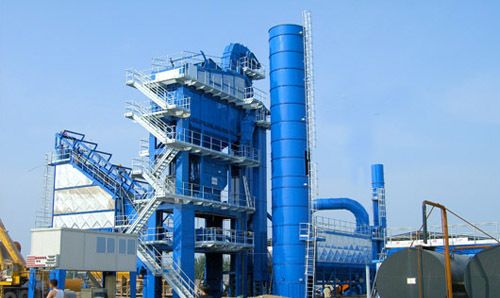If you have been purchasing hot mix plant from a supplier in your local area, you may have been considering buying an asphalt plant so you can begin producing hot mix on your own. You may even decide that you want to sell hot mix to others for an additional stream of revenue. If so, there are several important decisions that you will need to make including:
– Asphalt plant supplier
– Type of plant
– Style of plant
– Size of plant
– Budget
After you have made your decision about these options, you will also need to consider additional issues that may emerge such as:
– Size of storage silo
– Tank size
– Pollution control type
– Amount of cold feed bins
With that said, before you choose an asphalt plant supplier, you will need to learn about the different types of asphalt plants that are available.
Batch Plants
These types of asphalt plants creates hot mix in batches. The aggregate is placed into the feeders and enters into the rotary dryer. This is where all of the moisture is extracted from the aggregate.
The aggregate is then transported into several screens there it is further divided into different component sizes. Afterwards, it is stored in bins.
Then, the aggregates are proportioned into weigh bins that are located by the blending computer on the bitumen batch mix plant. From there, the aggregate enters into the pugmill and mixed dry for a certain amount of time. At the right time, oil is introduced to the aggregate and this combination is wet-mixed as required for the necessary time.
Once this cycle is over, the pug gate is opened and the completed hot mix is either released into a truck or it is loaded into a movable chute.
These types of asphalt plants vary in size from small 250 pound small machines to massive machines that weigh over 18,000 pounds. In fact, there are some on the market that weigh as much as 20,000 pounds.
Drum Plants
There are asphalt plant suppliers who specialize in asphalt drum plants. So, what is a drum plant? This type of plant is a continuous mix plant that takes the process of producing hot mix back to basics.
The feeders on this type of plant proportions aggregates into the proper blend so that it is able to meet the specific requirements for the job. All of the material is then conveyed into the dryer-mixer. This is where the first part of the unit works on removing moisture, while the last part of the unit focuses on the proper percentages of asphalt being injected and thoroughly mixed.
Once it has been mixed, it is then discharged onto a conveyor so it can be transported to a silo for storage. This is where the mix will remain until it is time for it to be distributed and transported by trucks to the job site.
Asphalt plants come in two styles, stationary and portable. The style that you prefer will be based on how you plan to use the plant. If you intend to move it from one location to another, a portable asphalt plant would be the best option.
When choosing the best asphalt drum mix plant exporter for your business, you will need to understand how these plants operate, as well as the pros and cons of each. Do your research, compare prices and features and purchase a plant from the supplier that offers the equipment you need.
